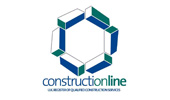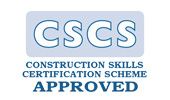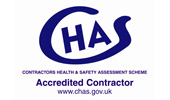Bonded And Unbonded Screed?
Bonded and Unbonded Screed
I’m Andy Parkin, Managing Director of the Multi-Award Winning Speed Screed. I’m here to talk about bonded and unbonded screed.
To really get a picture, we just need to explore each one of those scenarios.
Bonded Screed
When a screed is described as bonded, this means that it is connected, it is directly bonded to the substrate. To understand what that bond it, we must explore what a substrate is.
The substrate, in this example, is generally a structural substrate, and underneath the screed. Generally, the screed with be non structural, and will rely on the substrate to be structural.
Structural Substrate
The structural element can be:
- In situ Concrete, concrete that has been poured directly into the building.
- Beam and Block, are concrete blocks placed onto beams and then levelling screed on top.
- Precast Planks, which are manufactured offsite and delivered to site, and then craned into place. Screed is then laid on top to give a final levelling layer.
- Structures such as metal decking can also be used in a bonded situation.
Bonding
How does it actually bond in the first place? If laying a screed onto a concrete substrate, without any method of bonding, this would be actually classed as semi bonded. In some areas, you may get the screed bonding to the concrete substrate. To truly bond, you would need to use bonding agents and primers. Bonding agents sometimes require an addition of cement into the bonding agent. Generally, when it’s mixed like that, it tends to go in wet on wet. As the screeds going in wet, as in a semi-dry application, not a liquid screed, but in a semi-dry application, it would generally go wet on wet. For other types of screed, sometimes if it’s a smoothing compound, then it’d be a primer. Generally, the primer would be dry when the screed is going on.
Surface Preparation
Before you get to the stage of putting the bonding agents on, you need to know that the surface is sound, clean, and free from dust, oil, and grease.
It may require some surface preparation, not only sweeping, vacuuming, of the surface, but it may also require grinding, shot blasting, maybe even scabbling to open up the surface.
If is a recently laid concrete substrate, it is likely to need the top matrix taken off to open up the screed to allow bonding. This can be achieved by grinding, or shot blasting, and it could even require a specialist cleaning agent depending what products have been used on the surface (such as food preparation or motor industry). It is always best to take advice.
When would you use a screed in a bonded situation?
It tends to be when the screed needs to be thinner, at the bottom end of it’s capability depth wise. A smoothing compound could be a feather edge at 1 mm. Sand and cement specialist screeds go down to about 10 mm. The British Standard for a traditional screed states 40 mm. When it is above 50 mm for a traditional screed, then there isn’t normally a requirement for bonding, but it may be that it has been specified.
To be bonded directly to the substrate, you would not hear that hollow sound that you get when it is not bonded. When you hear the hollow sound, that doesn’t mean that it is a screed that is likely to fail if unbounded (providing the screed is deep enough). When a screed is quite thin, it relies on that bond.
Unbonded
What is unbounded? General that is when the screed is laid onto a membrane. You would classify that type of construction as unbonded because the screed does not come in direct contact with the substrate and so there is no bond between the two.
The other method is floating construction. Floating construction is when you have insulation. So effectively, the screed itself appears as though it is floating with that application. There is no bonding and you may also have a membrane below or above the insulation.
Our Accreditations
About Speed Screed
Speed Screed Limited was founded on the key principle of providing first-class customer service. It has since built itself an impressive reputation for delivering high-quality projects across the United Kingdom.
The company’s success is built on its belief in quality work, attention to detail, on-time completion, strong working partnerships and the recruitment of top-level staff. about us >








